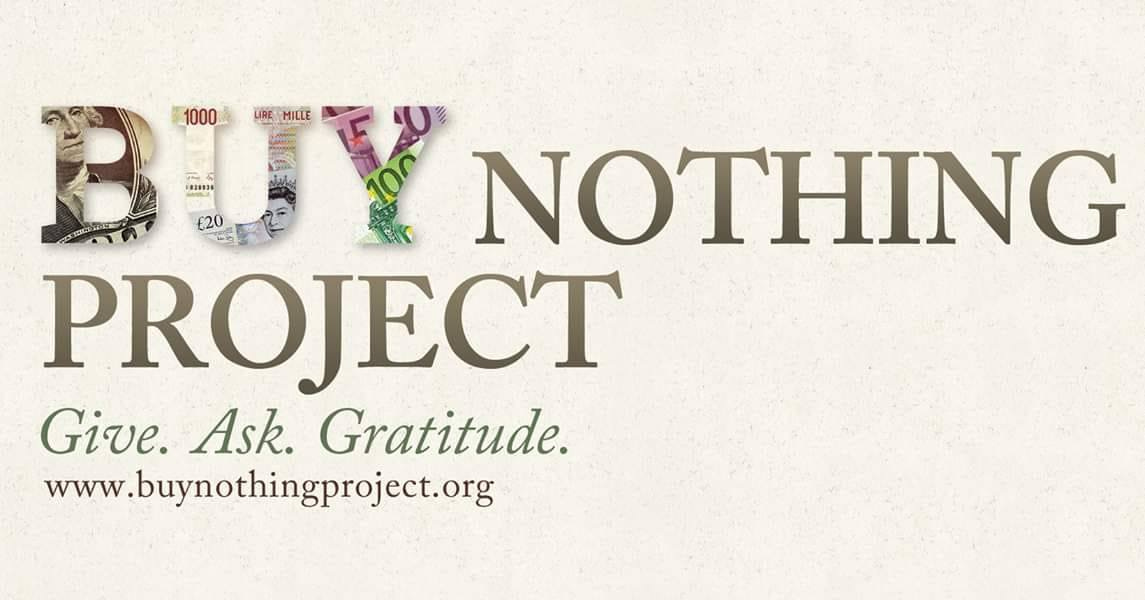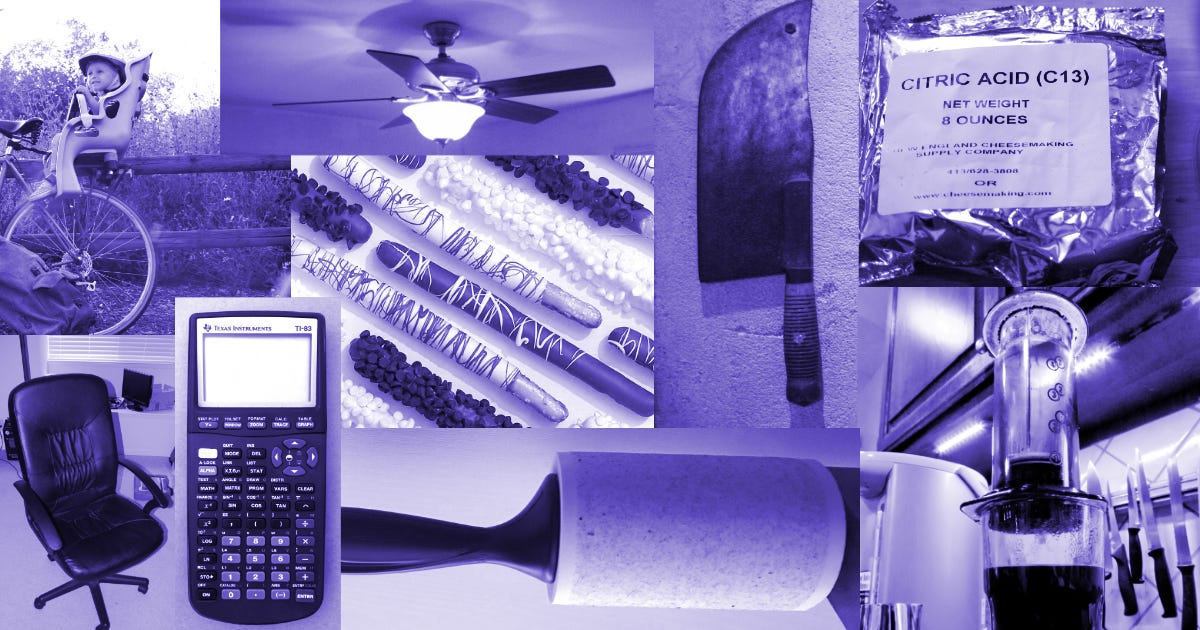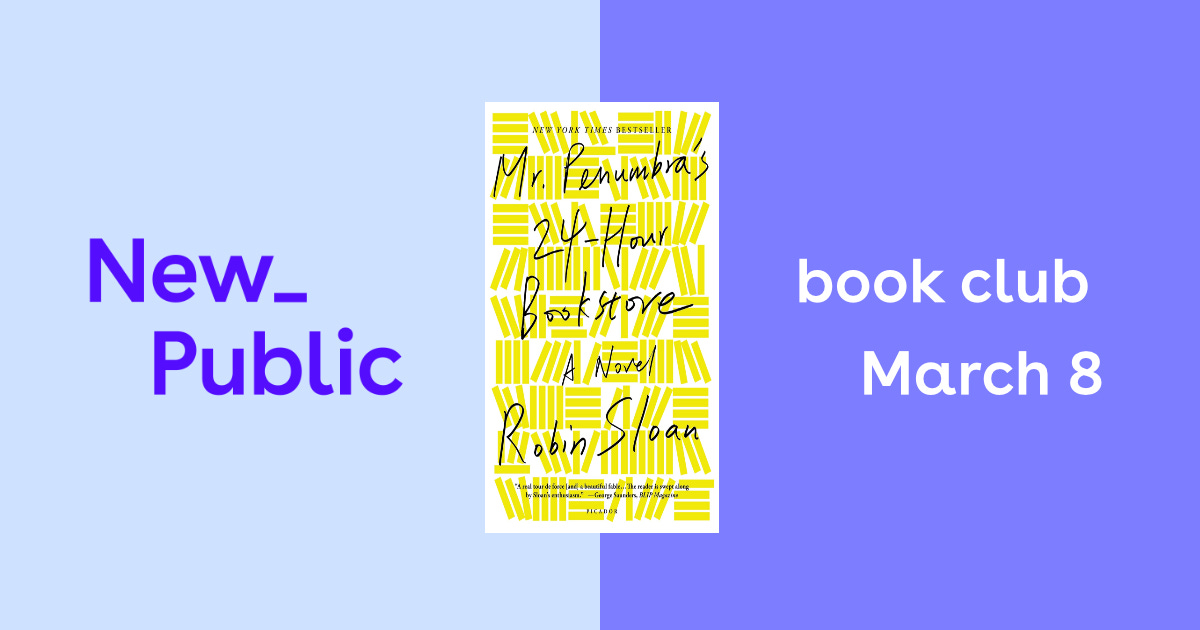🎁 The rules for buying nothing
Buy Nothing flourished in Facebook groups, but can it work anywhere else?
This week at a glance:
8️⃣ Eight years on Facebook gave Buy Nothing’s founders unique insights on building community on platforms
❌💵 Mutual aid is different, and arguably better, than ordinary charity
📚 We’re starting a book club!
Facebook Groups may appear to be a terrible part of the internet—a recent Washington Post and ProPublica investigation looked at tens of thousands of groups focused on U.S. politics and found them awash in hate and misinformation. But there are also many, many well-functioning groups, with millions of collective users. Facebook’s sheer magnitude means this broken clock can still be right tens of thousands of times a day. Let’s look at one network of Facebook groups that has flourished in this way: Buy Nothing Project.
In 2013, Buy Nothing was founded by Liesl Clark and Rebecca Rockefeller on Bainbridge Island, across the Puget Sound from Seattle, as a community of local gift economies. Over the years, it has grown into a movement, with more than 6,000 groups in dozens of countries, with millions of users and over 13,000 volunteers. If there’s a group where you live, you can apply to join with your address. Posts are strictly limited to giving away stuff and receiving it from other users. As you might expect, the offers run from the mundane to the wildly eccentric and poetic. Here are some examples of things recently offered in my local Buy Nothing group:
Kid seat for adult bike
Two ceiling fans
Silver bracelet, charm says “I love my dog”
Organic food grade anhydrous citric acid
White fudge dipped pretzel rods (opened, 6 remaining)
Meat cleaver, unused
The groups rely on the norms and expectations of Facebook Groups (such as the standard list of regulated goods), but almost everything else is homegrown and enforced by volunteer admins. The network has a uniform set of rules, like “Put people first” (which overlap with some of the Signals in our research, like Ensure people’s safety and Encourage the humanization of others).
Still, there is some localization: my group strongly encourages “letting it simmer.” Instead of giving away gifts (items on offer) to the first person who chimes in, it’s considered more equitable to wait 24 hours to gauge interest and then use a tool like Google’s built in spinner to randomly pick a winner. This policy is not uniform across groups, but in some, like mine, it is popular.
After nearly eight years on Facebook, the founders decided to leave and create their own app last year. In a series of fascinating blog posts, they explained the decision, as well as learnings from their time on Facebook. “It's been a crazy couple of years for the project as we came to realize, when we nearly doubled in numbers due to the pandemic, that running a social movement like this is not sustainable and the platform we’ve been using, Facebook, has been undergoing changes that are not conducive to local gifting,” they wrote.
In addition to wanting to make Buy Nothing accessible to people who don’t use Facebook, they listed a variety of conditions that have frustrated users: being in a group with inactive or has inactive admins; finding its geographic boundaries unnecessarily restrictive; or not having a local group to join at all.
Some insights are especially interesting to our project of creating digital public spaces where everyone can flourish, and we suspect they are salient for many more platforms beyond Facebook groups. For example, the founders observed that groups of 1000 or fewer users tend to work best:
We learned very quickly that groups that had more than 1,000 members began to drift into a sort of chaos, in which many Asks and Gives were unseen and unmet, because there was simply too much happening. Also, people began to feel unsafe because the mutual connections and real life relationships that build trust were harder to see, or no longer present.
They found that making the groups local is key, but can create complications. While having users with mutual connections and friendships facilitates trust, strict geographic boundaries are not neutral and often reflect historic inequities. When some local groups became unsustainably large, the network experimented with splitting them up and forming new, hyper-local groups. Unfortunately, “all of these practices make people feel excluded, they tear relationships apart, and they are problematic especially when new groups divide and segregate communities,” they wrote.
Because of these complications, the founders decided to migrate Buy Nothing to a new mobile app. But this hasn’t been easy, as Buy Nothing has evolved over years into a decentralized project made up of thousands of independent groups. I compared the app to the Facebook Buy Nothing group in my area. On Facebook, multiple gifts are offered a day, even through the holidays. On the app, the last offer was four days ago. (To be fair, the app is quite new.) To bring over users, the founders hope to convert many Facebook admins into “community builders” on the app, even as they reassure them that they can stay on Facebook if they prefer.
Since creating the app, the Buy Nothing founders changed the 10 Rules, and included this new one: “Respect Local Buy Nothing Culture: See this community’s conversation and pinned posts for information about this group’s localized rules and norms that bring the Buy Nothing ethos to life.” My Facebook Buy Nothing group hasn’t yet updated the rules since the founders changed them in July.
Occasionally, we’ll see an article or website that fits perfectly with something we’ve written about previously in the newsletter and revisit it here.
Mutual Aid vs. Charity
The setup: Last winter, a brutal storm hit Texas, knocking out power for millions for days and killing over two hundred. For both the storm recovery, and the winter wave of Covid-19, online mutual aid networks sprung up and proved themselves to be competent, scrappy, and essential in a moment of extreme need.
The newsletter: Struck by the emergence of these mutual aid groups, we interviewed Tammy Chang, one of the founding members of Mutual Aid Houston, and several others. Here’s how former New_ Public Editor Marina Garcia-Vasquez put it last February:
Over the last year, we have seen the very notion of mutual aid, a voluntary reciprocal exchange of resources and services for mutual benefit, get translated into tech — from software engineering and hackathons, to commercial apps broadening in scope and reconsidering issues of usership and privacy.
The TWIST: One thing we may have missed last year is the fundamental difference between charity, which often pours in after a crisis in the form of cash donations, and mutual aid, which is more of an exchange amongst peers. Opinion Writer Tressie McMillan Cottom recently explained the distinction in The New York Times:
So perhaps a group of neighbors, for instance, coordinates buying the sleeping bags or patching the roof or delivering the meals to the person in need — the aid is bidirectional, or relational. Mutual aid encourages relationships among people, whereas philanthropy builds ties between people and organizations.
The crux: Mutual Aid Houston, a year later, does not seem particularly active. It’s possible that there is a lot going on behind the scenes that’s just not particularly evident from their social media accounts. But it will be a shame if groups like Mutual Aid Houston don’t continue to nurture the connections and relationships they’ve already built. Emergency aid is just the beginning. Reliability is what makes a community, whether it’s disaster relief or a Buy Nothing group. If you have experience with mutual aid organized online, we’d love to hear about it.
Book club!
I’m thrilled to announce the first ever New_ Public book club! We’re going to read Mr. Penumbra's 24-Hour Bookstore, a novel by Robin Sloan. I would strongly encourage you to read the book, and if you are so inclined, please purchase it. We will do our March 8th Open Thread (at 12pm EST) about the book, and then we’ll be featuring an interview with the author here in the newsletter the following week. I’m really looking forward to discussing this book with you all, and with Robin.
New Jobs
Be sure to check out our new 6-month, remote, part-time positions currently open for applications: Community Architect and Design Facilitator. Learn more about both positions and apply here. (Note: Americas, UK and EU only)
Mastering Wordle,
Josh
Design by Josh Kramer. Screenshot of Google Spinner. Hover over the collage of items offered on Buy Nothing to see image credits.
New_ Public is a partnership between the Center for Media Engagement at the University of Texas, Austin, and the National Conference on Citizenship, and was incubated by New America.







I would encourage you to give more information on the book club choice - why it fits the New_Public philosophy etc. Like many, I've been focusing my reading on books written by voices from communities traditionally excluded from publishing - GLBTQ, BIPOC, and womxn authors - and would love to understand why this book should be an exemption. From my quick research re the author, it's written by a white man and is about a topic many white men have written about over the years (a secret society which, again based on limited research, seems to be a society of men). This is to say nothing about the book, which I'm 100% sure is wonderful.